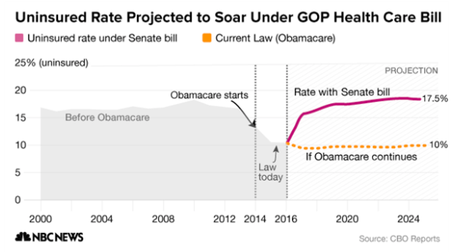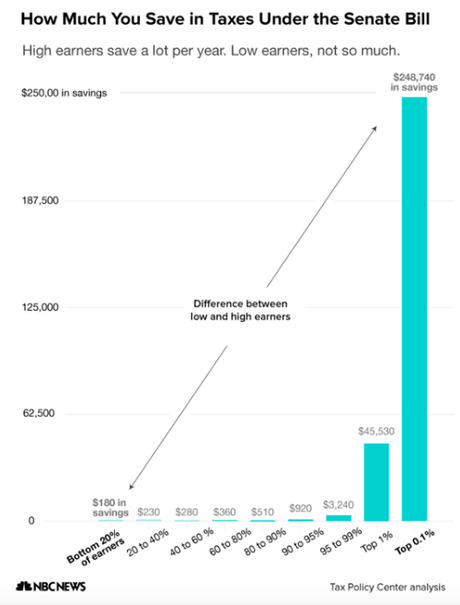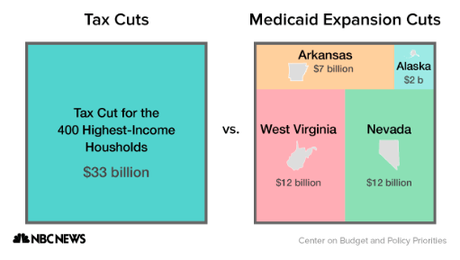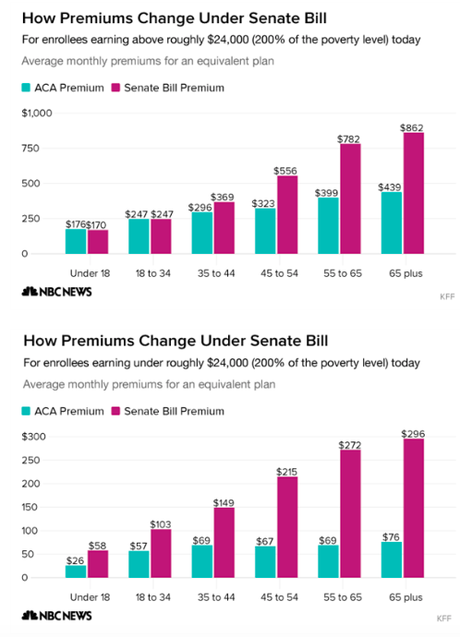



Senate Majority Leader McConnell is still trying to convince enough of his fellow Republicans to vote for the Senate's version of Trumpcare (BCRA). Most Republicans claim the bill is a health care plan, will not throw millions of people off the insurance rolls, and will lower insurance premiums. None of those things are true. It is much more a tax plan, takes health care away from at least 22 million Americans, and will actually increase insurance premiums for plans with current benefits.
Honest Republicans know this, and that's why McConnell is having so much trouble rounding up 50 votes for his version of Trumpcare. Here is how NBC News describes what the Senate plan will do:
As frustrated GOP senators are discovering, their bill is much less generous than Obamacare because it spends hundreds of billions of dollars less on people’s health care. And the main reason it spends so much less is that its savings are used to cut taxes for wealthy Americans and for medical companies. How close is the relationship? When it comes to Medicaid, it’s almost 1:1. The Senate bill slashes tax revenues by $701 billion over a decade, while reducing Medicaid spending by $772 billion versus current law. Overall, the Senate bill reduces federal health care spending by $1 trillion. The result: More Americans without insurance. According to the nonpartisan Congressional Budget Office, the bill would cover about 22 million fewer people by 2026 than Obamacare. It might be easier to make this tradeoff if the Americans losing aid for health care were the ones benefiting from the tax cuts. But unless you’re paying a penalty under Obamacare's individual mandate for deciding to go without insurance, you’re unlikely to notice the difference in your return. Instead, the biggest gains from the bill, by far, go to the top 1 percent of earners and especially the top 0.1 percent. The individual taxes the Senate would eliminate, a 3.8 percent surtax on investment income and a 0.9 percent payroll tax, only apply to single filers making over $200,000 and families making over $250,000. The cost of including these tax cuts, even for small numbers of high earners, is not chump change either. The Center for Budget and Policy Priorities estimatesthe bill’s tax benefits for the 400 highest earning households in America alone are equal to the cost of keeping Obamacare's Medicaid expansion in four states that cover 726,000 people. On the spending side, the bill requires people to pay higher premiums to buy a private plan similar to what's available under Obamacare. It accomplishes this by reducing spending on subsidies and distributing them in a way that encourages people to purchase higher deductible plans with lower premiums. At the same time, it eliminates Obamacare subsidies that help low-income people pay their deductibles. Here, too, the lower end of the economic spectrum fares worse than the higher end. The nonpartisan Kaiser Family Foundation projected premiums for people making over and under 200 percent of the federal poverty line (about $24,000 a year for an individual) and found the biggest spikes came for older low-income customers. The CBO also found this group would have the hardest time finding affordable insurance under the Senate bill.

